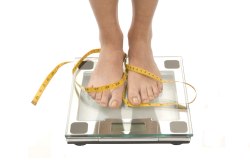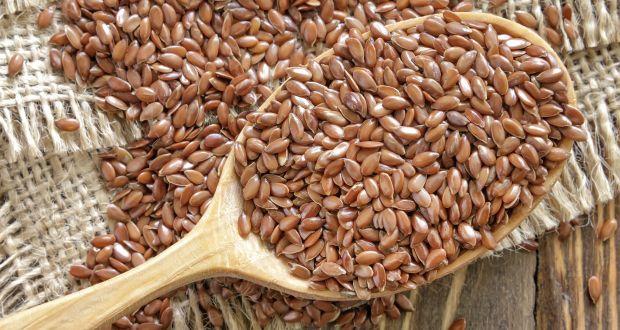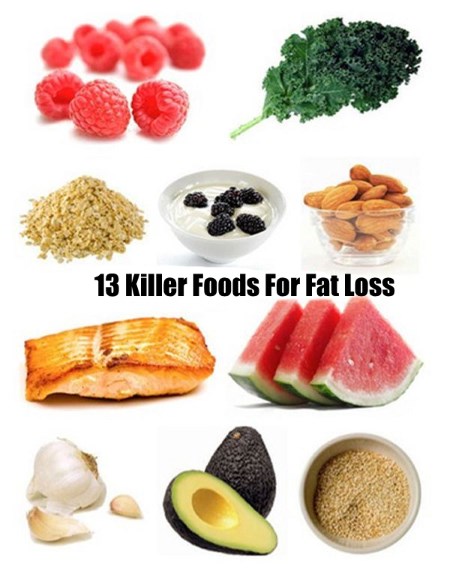How to Lose Extreme Weight
Losing an extreme amount of weight means you probably need to lose 30-50 pounds or more. Losing quantities of weight like this will require you to set goals, make a plan and stick to your plan for an extended period of time. Depending on exactly how much weight you need to lose, should plan on sticking to your weight loss plan for about 6-12 months or maybe even longer. Come up with a diet and exercise plan and ways to keep yourself motivated so you can lose a large quantity of weight.
Steps
Part 1 Setting a Weight Loss Goal
-
1
Figure out how much weight you should lose. If you feel you have a large quantity of weight to lose, it will be a good idea to figure out how overweight you are and how much weight you should lose to be in a healthy range.
- There are two methods to figuring out how much weight you should lose: BMI or body mass index and ideal body weight. Both are equations easily found online that can give you an idea of exactly how much weight you need to lose.
- There are a few different BMI categories. If your BMI falls into the range of 25.24.9 you're considered over weight and typically have 40-60 pounds of excess weight. If you're BMI falls into the range of 30-34.9 you're considered obese and have 60-80 pounds of excess weight. If you're BMI is over 35.0 you're considered morbidly obese and have over 80 pounds of excess weight to lose.[1]
- Also figure out your ideal body weight. This is dependent on your height and gender. Subtract your ideal body weight from your current weight to get an idea of how much excess weight you're carrying.[2]
- Compare the amount of weight you need to lose from both equations. You can average the two, or choose one or the other to follow.
-
2
Plan for slow, gradual weight loss. Even if you have a lot of weight to lose, you don't want to try any risky diets or aim to lose your weight quickly. Slow, gradual weight loss is safe and sustainable.
- Most health professionals only recommend losing about 1-2 pounds a week.[3] Although slow, this rate of weight loss is sustainable and you'll be able to have an easier time maintaining this weight loss long-term.
- Take your desired weight loss goal or total excess weight and figure out how many weeks it'll take you to lose that amount of weight. For example, if you want to lose 50 pounds and are aiming to lose 2 pounds per week, it'll take you roughly 25 weeks or about 6 months.
- You may lose weight quicker the first few months of your diet. This is normal when you have larger quantities of weight to lose. However, this shouldn't be your target weight loss rate long-term.
-
3
Set a specific goal. Knowing how much weight you need to lose and about the time you'll need to give yourself to lose it will help you define specific goals for yourself.
- Realistic and well-planned weight loss goals can keep you focused and motivated. This is especially true if you'll be losing weight for a long time.[4]
- When setting your goals, aim to be very specific and realistic. That means, following the guideline of losing 1-2 pounds per week maximum.
- Also note in your goals how you plan on losing the weight. Are you going to follow a specific diet plan? Are you going to create your own diet? Are you going to be exercising to help you lose weight?
- Also plan for some weeks where your weight loss may stall or you may have a few slip-ups. Both weight plateaus and a week or two of "falling off the band wagon" are normal and expected. Plan for this in your goal timeline.
-
4
Talk to your doctor. Whenever you want to lose weight, especially extreme amounts of weight, it's very important to talk your doctor about the safety of your weight loss.
- Your doctor will be able to tell you whether or not weight loss is safe and appropriate for you. Generally, if you have large quantities of weight to lose, weight loss will be especially beneficial to your overall health.
- Also, if you're overweight or obese, you may have some chronic health conditions like high blood pressure or diabetes. These conditions can complicate weight loss or make it more difficult.
- You may also want to consider speaking to your doctor about appetite suppressant medications. These are reserved for very overweight people and can only be prescribed by your physician.
Part 2 Designing a Weight Loss Diet
-
1
Set up a consult with a registered dietitian. Seeing a dietitian may be extremely helpful if you're trying to lose a lot of weight. These weight loss and nutrition professionals will be able to guide you along your weight loss journey.
- Ask your doctor or search online for a local dietitian that focuses in weight loss. Set up a consult to talk about your weight and desire to lose weight.
- Ask your dietitian to help prescribe a diet that will work for your personal lifestyle and abilities. They may be able to provide you a calorie range, meal plans and other suggestions to get you on a good weight loss track.
- You can also meet with them weekly or monthly to keep yourself accountable with your weight loss diet.
-
2
Manage calories. If you're designing your own diet, you'll need to come up with a calorie limit to help induce weight loss. Managing your calories is the backbone to your weight loss plan.
- To stick to your safe plan of losing 1-2 pounds per week, aim to cut out about 500-750 calories daily from your diet.[5]
- To figure out what a 500 calorie deficit looks like, start by counting the amount of calories you consume on a typical day. Keep a food diary or track your calorie intake in a food journal app for a few days to get an average intake.
- Take your average caloric intake and subtract either 500-750 calories from this number. This will give you an estimate of a calorie limit that will help you lose about 1-2 pounds per week.
- Unfortunately you can't keep cutting out calories to help you lose more weight. It's never recommended to eat less than 1200 calories a day.[6] If you do, you're weight loss will typically slow or stop and you're at risk for nutrient deficiencies because you're not eating enough.[7]
- If you subtract 500 or 750 calories from your typical day and get a number less than 1200, then you'll need to use 1200 calories daily as your minimum and target goal.
-
3
Follow a high protein diet. There are many studies that show the benefit of a higher protein diet and weight loss.[8] Following this type of diet will be especially helpful if you're aiming to lose large quantities of weight.
- Protein works great for weight loss for a few reasons. First, it helps maintain your lean muscle mass and metabolism or your body's ability to burn calories. It also helps you feel more satisfied at meals and keeps you satisfied longer after your meal is over.[9]
- When following a weight loss, high protein diet, choose lean sources of protein. These foods are lower in calories and fat and will fit into a restricted calorie diet.[10]
- Instead of trying to hit a certain amount of protein each day, focus on having 1-2 servings of protein at each meal. This takes the guess work out of a high protein diet.
- Each serving of protein should be 3-4 oz or about 1/2 cup.[11] Try foods like: seafood, legumes, low-fat dairy, lean beef, eggs, poultry and tofu.
-
4
Eat moderate amounts of carbohydrate-rich foods. In addition to following a higher protein diet, consider eating fewer carbohydrates to help you lose weight.
- Like higher protein diets, studies have also shown that lower carb diets result in quicker and easier weight loss compared to just low calorie diets.[12]
- Although carbohydrates are found in many foods, it's not realistic to cut out carbohydrates completely from your diet. Plus, it doesn't leave you with a well-balanced diet either.[13]
- Limit carbohydrates from the grain group. These foods do provide nutrients, but these vitamins and minerals are present in many other foods as well.
- If you do choose to have a grain like bread, rice or pasta, consider choosing only 100% whole grain foods. These foods are high in fiber, vitamins and minerals compared to refined grains like white bread or white rice.[14]
- Also, if you do choose to have a serving of grains, stick to the appropriate portion size. Measure out 1 oz or 1/2 cup per serving.[15]
-
5
Fill up on fruits and vegetables. When you're following a lower calorie diet, its easy to think you're not eating a lot of food or you're not eating enough to fill you up. Eating 5-9 servings of fruits and vegetables can help prevent this.
- Both fruits and vegetables are low in calorie, but very high in fiber, vitamins, minerals and antioxidants.[16][17]
- Filling up half your plate with a fruit or a vegetable can help provide bulk and volume to your meals without going over your calorie limit.
- In addition, these high fiber foods can help make you feel more full with less and keep you feeling full longer after your meal has been over.[18]
- Measure out your portions of your fruits and vegetables. Stick to 1 cup of dense vegetables, 2 cups of leafy greens and 1/2 cup of fruit per serving.[19][20]
-
6
Use water to manage appetite. In addition to foods, you can use water to help you lose weight and stay satisfied on your diet.
- Although water alone doesn't cause weight loss, it can definitely help. Stay adequate hydrated each day to help support your weight loss.
- When you're dehydrated, even a little bit, you may have feelings of hunger instead of thirst.[21] This may cause you to eat or snack which can make weight loss more difficult.
- To prevent dehydration, drink adequate fluids each day. Aim for 8-13 glasses daily or so that you do not feel thirsty during the day.[22]
Part 3 Using Exercise to Support Weight Loss
-
1
Start increasing lifestyle activity. If you have a lot of weight to lose, adding in some activity to your day will help you reach your goal.[23]
- If you're not currently active or haven't been active in awhile, consider starting your exercise routine by increasing your lifestyle activities.
- These are exercises you do on a regular basis. Anything from walking around during the day, taking the stairs or doing household chores can count as lifestyle activity.
- Some studies show that increased lifestyle activity throughout the day can have similar results in regards to weight loss as planned and structured activities (like a 20 minute jog).[24]
- Think about your current day and how active you are. Plan ways that you can move more and take more steps in the day to increase your lifestyle activity. Try parking farther away, skipping the elevator and taking the stairs, going for a walk on your lunch break or doing standing squats during commercial breaks.
-
2
Include low-impact cardio exercises. In addition to lifestyle activity, it's important to work on including planned aerobic or radio exercises. These are the "calorie burning" exercises that have a significant effect on your weight.[25]
- If you have a significant amount of weight to lose, medium to higher intensity exercises may be too difficult or uncomfortable to perform. Stick to low-impact aerobic exercises until you feel more comfortable with higher impact exercises.
- Low impact exercises to try include: water aerobics or water walking, using the elliptical or recumbent bike.
- The typical amount of activity recommended is about 2 1/2 hours a week.[26] If you're unable to do this amount initially, thats OK. Pick an amount of time that you're able to do and start there. Slowly advance to increased time per session or increased frequency over the week as you're able.
-
3
Begin strength training. Another type of exercise to include is strength or resistance training. Unlike cardio, these exercises help increase lean muscle mass and your metabolism.[27]
- If you're not currently active, start your exercise plan with lifestyle activity and cardio. Once you're able to do these comfortably, start incorporating strength training. It may be too much to include all 3 types of activity at once.
- However, the benefits of strength training are great. It can help increase your metabolism and help your body burn more calories at rest.[28]
- Aim for 1-2 days of strength training each week. You only have to do about 20 minutes and work every major muscle group.[29]
-
4
Speak to a personal trainer. Something that could be helpful is speaking to a personal trainer or exercise specialist. This will be especially true if you're not familiar with exercise.
- If you haven't exercised before or not in a long time, it might be beneficial to meet with someone who is a professional. Tell them about your weight loss goals and ask how they can help you meet them.
- A personal trainer can give you an exercise plan to help you lose weight. In addition, they'll be able to show you how to use the machines properly so you do not injury yourself.
- Many local gyms have personal trainers on staff. In addition they may give you a deal on personal training sessions when you first sign up for a gym membership.
Part 4 Staying Motivated
-
1
Create a vision board. Creating a vision board can be a fun and creative way to keep yourself motivated during a longer period of weight loss.
- A vision board is an actual board - either a cork board, white erase board or pin board - that you use to put up things that inspire you. Looking at your vision board regularly should be fun, inspiring and motivating.
- You can put anything you want on your vision board. Common items include: inspiring quotes, pictures of clothes you want to fit into, pictures of activities you want to be able to do or pictures of you at a healthier weight.
- Place your vision board somewhere you'll see it on a regular basis. Also, feel free to change or add things to it as you make progress on your goal.
-
2
Monitor your progress. Nothing is more inspiring or motivating than monitoring your progress as you lose weight. Track this so you can stay inspired and be aware of your progress.
- Many studies show that if you track your weight over time, this accountability helps you stick to your weight loss plan and maintain your weight loss long-term.[30]
- Weigh yourself 1-2 times a week maximum. Also, make sure to weigh yourself on the same day of the week in the same clothes so you see an accurate trend in your weight loss.
- Another thing you can consider tracking is your measurements. Measure your waist, hips, arms and thighs and track these measurements each month.
-
3
Find a support group. Social support is extremely important when you're trying to lose weight. Without it, you may not be as successful.
- Studies have repeatedly shown that those people who had a support group during and after weight loss were more likely to stick to their diet program and were able to maintain their weight loss easier long-term.[31]
- Talk to your friends, family members or even co-workers about your weight loss goal. As them to be your support group. You never know, they may even want to join you.
- If you can't get anyone to be your support group, try going to weight loss support groups in person or even online.
-
4
Start a weight loss journal. Keeping a journal is a great way to track your progress and keep you motivated through a longer weight loss period.
- You can include a variety of things in your journal. You can track your food, calories, exercise or progress.
- Studies show that those people who track their food and note their weight loss progress are able to lose more weight compared to those that don't.[32] It's a great form of accountability.
-
Picking The Very Best Weight Loss Diets
Not all popular weight loss diets are totally risk-free. The Zone Die
-
Fast Weight Loss Diet And How To Lose Weight Fast
Obesity is a truly complex health hazards that may affect any individ
-
7 Tips For Successful Weight Loss
Many people want to lose weight but never succeed for various reasons
-
What is the Best Diet Food?
What is the best diet food? Frustrating is an understatement, I
-
Weight Loss Tip #46: Work out, the way you like it
-
3 Tips You Have To Do To Get Rid Of Stubborn Belly Fat
Two words: BELLY FAT! Gives you shivers, right? In order to get rid o
- DON'T MISS
- Use These Great Weight Loss Tips To Help You Succeed
- Weight Loss Powerful Tips And Exercise For Physical Fitness
- African Mango Does It Work To Achieve A Perfect Weight Loss?
- Working Natural Remedies For Weight Loss Methods
- This Woman Got Her Flat Pre-Kids Belly Back By Exercising For Just 10 Minutes A Day
- Top 4 Weight Loss Tips
- Great Tips To Lose Weight And Keep It Off
- How To Weight Loss Care, Tips
- How to Lose 15 Pounds in 2 Weeks
- Lose Weight Quickly 'Guaranteed': Is It A Scam?




